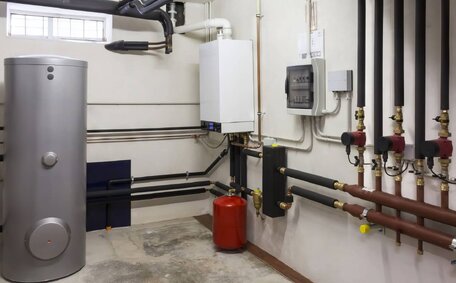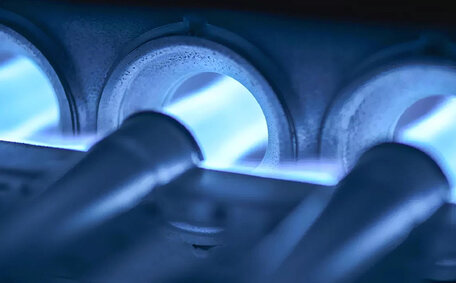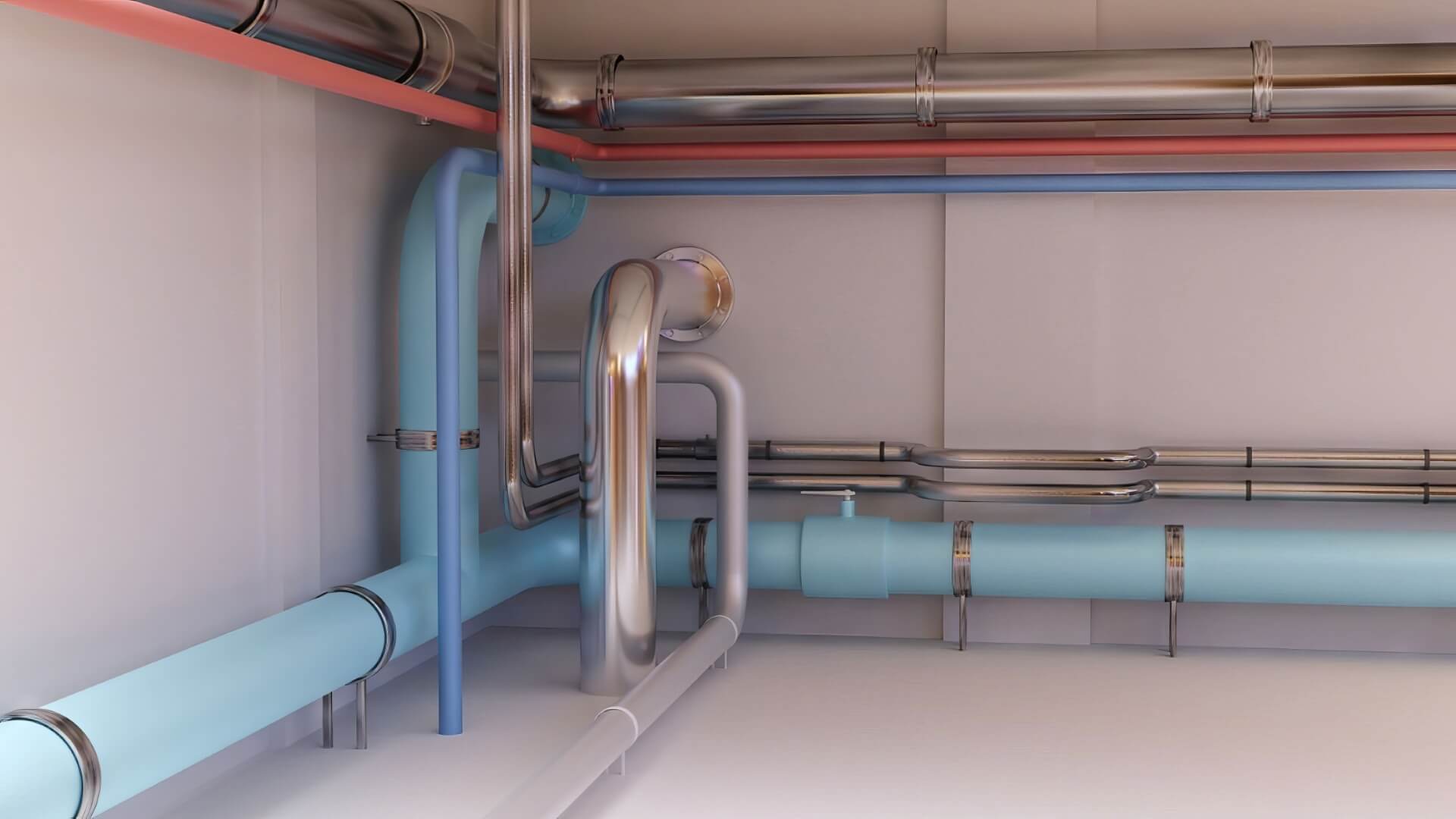Introduction to Gas Pipeline Lifespans
Underground gas pipelines are an integral part of energy infrastructure, transporting natural gas to homes and businesses across vast distances. However, these pipelines do not last forever. The lifespan of a gas pipeline depends on various factors ranging from pipeline materials and construction to environmental conditions and usage.
Our licensed gas fitters in Sydney are well-versed in all aspects of pipeline longevity, ensuring your gas systems are well maintained and reliable.
As leaders in the plumbing industry, we aim to give homeowners and businesses clarity on gas pipeline lifespans and considerations around maintenance and renewal.
This guide delves into the determinants of pipeline durability ranging from materials and environmental stressors to maintenance practices, also reflecting how evolving energy trends influence gas delivery system lifespans.
We’ll examine safety and financial considerations, contrasting decommissioning ageing gas assets with reinvestment, using industry data and real-world examples.
Key Factors Influencing Gas Pipeline Durability
When installed correctly using modern materials and construction methods, gas pipelines have an engineered lifespan of approximately 50 years. However, many complex factors affect whether infrastructure reaches or exceeds this benchmark.
Numerous elements affect pipeline durability, such as:
- Materials used - corrosion-resistant steel, polyethylene plastic, reinforced concrete, etc.
- Manufacturing quality - strength, seam welding, anti-corrosive coatings, etc.
- Installation method - depth underground, soil compatibility, pressure testing, etc.
- Operational variables - gas throughput, pressure fluctuations, leak monitoring, etc.
- Environmental conditions - soil chemistry, rainfall, temperatures, seismic activity, etc.
- Maintenance activities - corrosion protection, repairs, component upgrades, etc.
Specifically within the Sydney basin geology, issues like soil acidity and salt exposure can degrade buried gas pipelines. Proactive maintenance is crucial, as seen on a local level with Bossley Park Plumbing’s licenced team detecting and rectifying leakage or dangerous fitting issues for homes and businesses.
Steel pipelines can function beyond 50 years with solid design, installation, thorough operation, and maintenance. Other materials like polyethylene may only last around 30 years before requiring replacement. Advance planning around asset lifespan and renewal investments is key to avoiding supply issues.
Technical Considerations for Pipeline Materials
Constructing gas pipelines with corrosion-resistant and durable materials is imperative for ensuring longevity, especially in the face of pressure fluctuations.
Contemporary gas lines often employ carbon steel with fusion-bonded epoxy coats or specialised polyethylene. Conversely, while polyethylene lines resist corrosion, they can’t withstand the same pressure levels as steel.
Carbon steel offers high tensile strength to withstand internal gas pressure. Corrosion resistance is provided by the coatings applied to the steel.
In the manufacturing process, line materials are lab-tested to ensure lifespans exceeding 50 years under varying temperatures, pressure levels, and environmental conditions. Gaskets, joints and welds are also examined under stress to confirm integrity and long-term performance.
In areas prone to soil corrosion, advanced piping like reinforced thermoplastic or even stainless steel will be preferred despite higher costs. Using higher-grade materials for proactive replacement can significantly extend a pipeline’s operational life beyond initial estimates.
At Bossley Park Plumbing, our gas specialists stay abreast of piping innovations and best practises around materials selection, pipeline longevity projections and infrastructure renewal planning as per Australian standards.
Environmental Stresses on Buried Pipelines
Gas pipelines, buried underground, are subject to environmental stresses that can affect their durability and operational lifespan.
Key factors include:
- Soil conditions - Acidic or salty soils can corrode pipe coatings and steel over time.
- Weather impacts - Temperature swings and soil moisture flux subject lines to expansion/contraction stresses.
- Physical disturbances - Nearby construction or seismic activity risks pipeline damage.
In Australia, the standard for burying gas pipelines varies by region, with a minimum depth of 500mm and an average of 750mm, contrasting with the United States where the requirement is around 90cm.
Deeper burials better shield lines from surface-level activity like excavations or heavy vehicle traffic. However, deeper trenches pose logistical and cost challenges during installation and subsequent maintenance access.
Proactive renewal of older pipelines susceptible to corrosion can mitigate risks from ongoing subterranean stresses. Our specialists at Bossley Park Plumbing remain alert to any environmental factors that may compromise pipe integrity in the Sydney area.
The Effects of Renewable Energy Adoption on Pipeline Lifespans
The global expansion of solar and wind energy sources has disrupted natural gas demand forecasts and decreased dependency on piped gas.
This has significant effects on existing pipeline lifespans. Infrastructure designed and financed around 50+ year lifespans face early retirement or underutilisation. Pipeline owners must choose whether to decommission or reduce supply capacities along certain routes in response.
Mothballing or removing gas pipelines carries major cost implications. Owners risk stranded investments, making it preferable to repurpose lines for renewable gas or hydrogen transport where viable. Nonetheless, the expenses associated with conversions may necessitate early pipeline closures on financial grounds.
At Bossley Park Plumbing, our team stays informed on the renewables transition and shifting outlook for gas pipeline longevity. We aim to advise local customers if supply reliability or safety risks increase due to ageing, underused pipelines stretched beyond original lifespans.
Financial and Safety Risks of Aging Pipelines
With gas pipelines nearing or surpassing their designed 50-year lifespan, owners and communities face heightened financial and safety concerns.
Older pipelines tend to suffer increased leakage due to corrosion and weld failures. Research by the Canadian Energy Pipeline Association indicates that pipelines over 30 years old are three times more likely to experience significant incidents compared to newer ones.
Gas leaks cause explosion dangers near homes or commercial sites, alongside toxic fume hazards. High pressures or volumes can trigger blasts with destructive shockwaves. Additionally, released methane inflicts environmental damage.
Repairing leaks and replacing degraded sections of elderly pipelines grows increasingly expensive for owners. Installing significant pipelines incurs costs of millions per kilometre. Confronted with substantial renewal expenses, owners might decide to decommission pipelines where a decrease in demand allows.
Decommissioning also carries costs, including purging gas remnants and capping pipelines laid years ago safely. Leftover infrastructure that is difficult to remove poses contamination risks when other excavation or construction occurs nearby.
At Bossley Park Plumbing, we emphasise that ageing gas pipelines demand rigorous monitoring and upkeep to avoid catastrophic failures. While newer infrastructure boasts improved materials and safety systems, older pipelines still supplying Sydney homes and businesses should not be neglected past original lifespan estimates.
Warning Signs of Pipeline Deterioration
Ageing gas pipelines can develop issues threatening safety and reliability without obvious external signs. However, certain red flags may indicate deterioration:
- Drop in pipeline pressure or gas flow rates
- Unexplained odour detectable near the pipe path
- Dead vegetation in a linear pattern above the pipeline
- Significant dents, scrapes or cracks in above-ground sections
- Leak detection sensors or patrols identifying faults
High-tech inspection methods like smart pigs (pipeline inspection gauges) also check pipe wall integrity deep underground using ultrasound and magnetic sensors. These can identify pipe corrosion or wall thinning over time.
At Bossley Park Plumbing, our seasoned technicians employ gas detection gear during leak investigations at client sites. We also stay abreast of pipeline inspection advancements to best advise on local infrastructure renewal needs and associated safety precautions for greater Sydney communities.
Case Studies of Pipeline Failures
Improper maintenance or extended operation beyond intended lifespans can result in devastating pipeline failures. Reviewing such incidents helps illustrate why regular inspection and proactive renewal is essential.
In 2018, methane detection systems alerted technicians to a leak in a 16-inch transmission pipeline near Port Macquarie NSW. An inspection revealed severe external corrosion likely from inadequate protective coating years ago, back in 1965. Repairs were prompt but had monitoring devices not raised the alarm, an explosive rupture may have resulted.
A decade prior in Victoria, corrosion and undetected cracking caused a high-pressure gas main to fail without warning. The deafening blast destroyed shops and injured multiple people. Investigations revealed the pipeline, constructed years ago in the 1960s, lacked modern anticorrosion treatments and sufficient wall thickness to remain sound after almost 50 years underground.
These incidents demonstrate that buried gas pipelines, while appearing inactive and sturdy, are vulnerable to gradual decay, culminating in perilous failures. Owners must maintain strict monitoring practices with contemporary non-destructive testing methods, and commit to renewal investments before nearing the end of an asset’s lifespan to preempt escalating risks.
At Bossley Park Plumbing, we strongly advocate safely decommissioning pipelines approaching end-of-life or investing in proactive replacements using modern, long-lasting materials. Despite the inconvenience and expense, maintaining a robust gas delivery infrastructure is crucial for community safety.
Best Practices for Pipeline Maintenance and Inspection
Critical for maximising gas pipeline lifespans and ensuring safety is adherence to best practice for maintenance and inspections, encompassing:
- Regular cleaning/dewatering of pipelines
- Testing for leakage and corrosion at set intervals
- Applying advanced protective internal coatings
- Cathodic protection systems to reduce external corrosion
- Upgrading components proactively before end-of-life
- Monitoring depth-of-cover and marking pipeline routes
- Renewing obsolete pipelines using modern materials
- Decommissioning assets no longer fit for purpose
Periodic use of modern inspection methods like smart pigs yields vital information on optimal timing for pipeline maintenance or renewal. Technicians can then evaluate pipeline wall thickness and integrity to guide maintenance priorities.
At Bossley Park Plumbing, we encourage gas pipeline owners to adopt asset management best practises honed through years of industry experience. Investing in rigorous maintenance aligns with community safety and environmental priorities as assets age.
Processes for Decommissioning and Replacing Old Pipelines
When gas pipelines near or exceed their lifespan, asset owners must determine whether to decommission or proactively replace ageing infrastructure.
Decommissioning involves permanently taking a pipeline out of service. This requires:
- Notifying affected customers and suppliers
- Reducing pipeline inventory by restricting supply intake
- Flushing remaining gas using air, water or inert gases
- Sealing off and capping pipeline endpoints
- Disconnecting above-ground components
- Updating utility records and land titles with retired asset details
Purged and sealed, inactive pipelines might be left in place or removed, conditional on the environment. Legacy pipelines without modern identification markers present challenges during subsequent excavations.
Though replacing old pipelines requires significant construction, it’s imperative for preserving supply integrity. It also necessitates upgrading downstream components like metre sets and pressure regulators to interface modern infrastructure.
At Bossley Park Plumbing, our specialists stay informed on best practises around legacy pipeline retirement and replacement projects occurring locally. We aim to guide clients if decommissioning activities risk service disruptions or pose safety hazards.
Considerations for Abandoned Pipelines
Decommissioned pipelines leave owners with the choice to either extract or leave the lines buried. Abandoning pipelines not purged correctly risks safety issues if disturbed later during excavations.
In Australia, pipeline owners preparing to abandon assets must:
- Flush all gas remnants using approved methods
- Install permanent caps/plugs to seal endpoints
- Backfill access points like vents to prevent entry
- Update pipeline location records with asset owner and authority
Registered details help crews avoid abandoned lines when future digging occurs nearby. However, older pipelines may lack reliable abandonment documentation.
U.S. guidelines notably lack requirements to record abandoned pipeline routes. This often leads to issues when older infrastructure is not reflected in utility diagrams for ongoing construction.
At Bossley Park Plumbing, we highlight that however inconvenient, responsibly decommissioning and documenting retired pipelines protects community safety long-term. Asset owners must regard abandonment as permanent retirement, not an option if pipelines temporarily become underused.
The Future of Gas Infrastructure
With the global shift towards renewable energy sources, the future of gas infrastructure is in question. Natural gas may continue supplementing solar and wind power during peak periods for decades to come. Yet, stricter greenhouse gas regulations may precipitate the early retirement of certain gas pipelines.
Technology innovations could enable gas infrastructure to transport hydrogen or captured carbon instead. But refitting pipelines requires substantial investment, with success depending on policy support and emissions pricing mechanisms.
New materials and digital monitoring innovations offer improved pipeline integrity and precise lifespan predictions. Climate change-induced extreme weather conditions necessitate the acceleration of replacement cycles to capitalise on technological advancements.
At Bossley Park Plumbing, we stay abreast of policy and technology shifts influencing Sydneys gas infrastructure lifespan. Our commitment lies in providing local customers with guidance on network reliability and safety amidst the evolving energy landscape.






